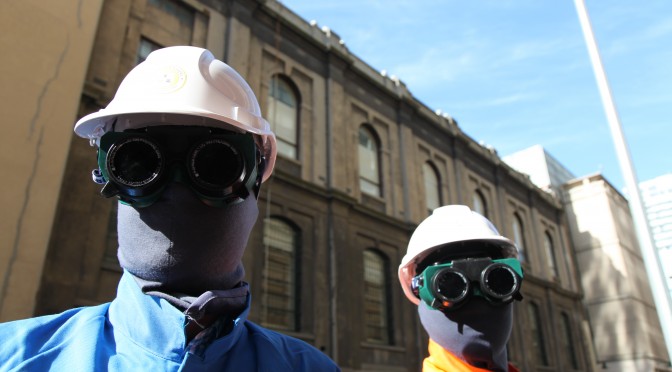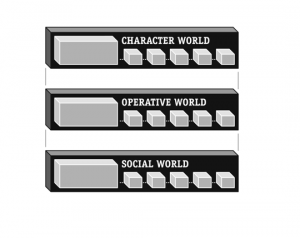“[G]ame designs are attempts at making players think and act abnormally. This is fundamental to every medium in a way, and part of what can make any one of them compelling.”
Melbourne 2010: LocoJetro, Codemakers, final score = 45
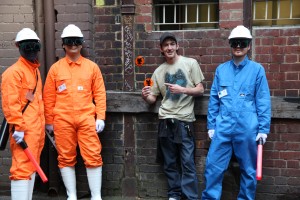
The discovery of the alternate reality game (ARG) Urban Codemakers is half of the game itself. Midway through the game’s first iteration in 2010, Urban Codemakers were traversing the streets of Melbourne when a man on the street–who turned out to be an ARG player (LocoJetro)–asked to take a “selfie” with them. He continued on to explain how he had become aware of the game. The man had been walking home on his usual path when something caught his eye: he had found one of the Urban Codemaker “codes”, and decided to keep it.
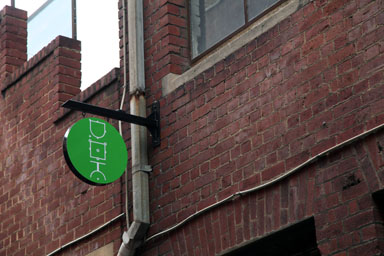
The next day, he examined the code again, finding a web address on the back. The knowledge from this website transformed the man’s found object from a piece of plastic into a game token, and with it he transformed from Social Actor into Operator Player. Retroactively, the site at which he found it was transformed into a game space; ground zero for further exploration.
LocoJetro’s story outlines the designer’s favored way into the alternate reality of the Urban Codemakers, an ARG that has been played in Melbourne and Sydney since its inception in 2010. It is played in urban spaces and thematically concerned with cities. In the game players choose one of three guilds, each with their own agenda, either to revert, renew or remake the city. The game’s mechanics are simple. In order to score points players collect codes that mark sites, transforming them into readymade game spaces.
Each code is photographed in situ and logged online. To claim the code, players must find its location using clues found online and “collect” it. On the reverse side of each code is a sequence of letters and numbers used to unlock it and claim it for the player. The game is played over several weeks and some codes are worth more than others–these special codes unlock fragments of narrative that expand the stories of the three guilds. Individual scores are logged on a leaderboard alongside overall guild scores. In the first iteration of the game, the LocoJetro’s guild won the right to rezone the city via play.
This anecdote illustrates a central tenet of ecological psychology, perhaps best surmised as a mantra: knowledge creates perception, perception creates action, action creates new knowledge, and so the cycle continues. Simply put, LocoJetro’s newfound literacy vis-à-vis Urban Codemakers offered a new way of seeing the environment: ludic affordances, previously hidden due to a knowledge deficit (“what are these plastic things?”), became not only visible but conspicuous once the social actor took it upon himself to learn the game. Graduating from Social Actor (“John”) to Operative Player (LocoJetro), this switch instantiated an entirely new sense of being-in-the-world: in LocoJetro’s world (as opposed to John’s) the environment is filled with playful possibilities, ludic affordances in the form of tokens, points and leaderboards. This epistemological shift propelled new perceptions, new actions, changed the gamestate, and generated new knowledge for the wider Urban Codemaker community’s assimilation and response.
This essay considers the pervasive game Urban Codemakers as a theoretical exemplar of the complex ways that players, objects, and environment interact.
Background
Urban Codemakers draws upon the design principles of pervasive games in its strategies for engaging the public. Equal parts treasure hunt and urban adventure, its core fiction as an ARG is centered on the activities of Guilds of Urban Codemakers originating in the Micronation of Ludea. Pervasive games “expand the contractual magic circle of play spatially, temporally, or socially.” These three cornerstones define pervasive games for Montola, Sternos, and Waern. Spatially, this expansion occurs though opening up the field of play first of all from being not exclusively screen-based, then to include aspects of the everyday – such as Melbourne streets and laneways. Temporally, games such as Urban Codemakers are active all the time, with this particular run lasting for four months. Players may shift in and out of the game at any time. This time shifting means that socially, the game is embedded in the players’ daily lives, or may activate their social life through playing with friends or strangers. Finally, as the game takes place in the city, members of the public are engaged as spectators or perhaps cross over into the game frame to become players themselves.
Most accounts mark 2001 as the birth of pervasive game design. The first ARG, The Beast, was unleashed on the public at this time, and Blast Theory staged Can You See Me Now?, the first iteration of their take on street sport. However, one of the earliest deployments of play in urban space was staged by the situationists as early as 1955. Readers of Johan Huizinga, Guy Debord and his contemporaries used play as subversive strategy to upset the rational design of public spaces. Stewart Brand and Bernie De Koven had a similar agenda in founding the New Games Movement in the 1970s. They used play for the sake of play, so as to create public spectacles and engender play communities through collaborative, rather than competitive, game design. Of course, beyond this outdoor play has been part of public life for centuries.
Jane McGonigal has recently re-confirmed the potential of play to engage people with the world around them. Her provocative assertion that “reality is broken” sets up a rhetorical double move. First of all, it draws attention to the world around us as a playground, and second, asks us to see that world in terms of the rules and systems that we are familiar with in digital playgrounds. Like the situationists, she sets up a set of rules for engagement with reality that enable the design and development of games that play with its “infinite affordances”. Making claims such as “reality is too easy” and “reality is lonely and isolating” highlights opportunities for game design to step in and modify one’s inter-(and intra-)personal relationships.
In a relatively short period, pervasive game design has developed a set of core principles and strategies for engaging the public that enable new ways of being-in-the-world.
The Procrustean Player
Players are often forced into the bed of Procrustes through theoretical constructs that present for the reader an orderly, discrete analysis at the cost of the player’s ontological wellbeing: Huizinga’s magic circle delineates a highly bounded space-time for play; Roger Caillois divides types of play into four rigid categories – agon, mimicry, ilinx, and alea – existing across a bipolar spectrum between paidia (free play) and ludus (structured play); even later scholars such as Alexander R. Galloway draw definitive boundaries between levels of fiction experienced by the player, e.g. as diegetic/non-diegetic.
Yet the moment of play also extends across time and between spaces. Consider the office worker sitting in her cubicle, thinking about the best way to defeat last night’s end-boss, searching forums and altering character equipment on her mobile device. Games, both digital and analog, shift between Caillois’ boundaries from moment to moment, such as the footballer kicking the ball (agon), the ball interacting with a sudden gust of wind as it sails through the air (alea), before finally settling in the back of the net; the player may then imitate the celebration of Real Madrid’s Gareth Bale (mimicry), a love heart formed between both hands.
In the midst of a session of role-play gaming, the user may jump out of character to consult the rules on how best to proceed; a phenomenological shift that Galloway would class as movement from diegetic to non-diegetic (and thus a kind of fourth wall break). Yet for the player this is all part of a fluid, shifting experience within the overarching game frame (as discussed by Gary Alan Fine and, later, Mia Consalvo): the traditional phenomenological shock of a fourth-wall break is most certainly not the average player’s experience as she consults a rulebook to work out the finer points of a combat encounter in Dungeons & Dragons.
Finally, much theory assumes the player is knowingly involved in a game and cognizant of the rules, which, as demonstrated by our opening account, must also be questioned, especially in the light of ARGs and pervasive games. Overall the player is often caricatured as some transcendent subject that exists above, on the side, or inside the game; in any sense, the player is always some kind of separate, sovereign entity. Yet what if, when we decompile the concept, “player” was a fluid network of objects affording ludic enactment, enabling the emergence of a “player” mode of being? Though important milestones in the formation of game studies, the theories outlined above are blunted when applied to the experience of games as an ecosystem that affords player subjectivity.
Therefore, we wish to point towards a more nuanced framework for understanding the space, time and identity of play, beginning from the ground up, i.e., taking the hermeneutic agency of the person and the affordances of the immediate environment as critical to the comprehension of games. We therefore view games not firstly as static material artifacts but, to borrow the term from Heideggerian hermeneutic phenomenology, as a particular kind of Dasein supported by an ecosystem. That is to say, the essence of the human is ontological: to question, to interpret, to generate meaning through embodied engagement with one’s world is inherent in our being. “World” here is not some cartographical qualification or physical mass, but used in the phenomenological tradition to designate a network of meaningful relations that pertains to a specific milieu, e.g. the business world, the world of Korean BBQ, the world of JRPGs, the world of Urban Codemakers, and so forth. Erving Goffman describes games as:
[… a] matrix of possible events, and a cast of roles through whose enactment the events occur, constitute together a field for fateful dramatic action, a plane of being, an engine of meaning, a world in itself, different from all other worlds except the ones generated when the same game is played at other times… Games, then, are world-building activities.
From this standpoint, it is the player who unconceals, comprehends and maintains a gameworld, often incorporating all kinds of objects into her understanding, as we will see. It should be highlighted however that, for a game event to occur, the objects must allow this incorporation (literally into one’s sense of being); certain objects may obstinately refuse, falter or outright fail to afford ludic possibility. As scholars of Actor-Network Theory have frequently illustrated, the human agent is rarely the primary (and indeed never the solitary) causal agent.
Building our epistemology upwards from a phenomenological understanding of player action, we are able to reconcile what, from the clinical view of much top-down, text-centric theory, may seem paradoxical, dissonant and antithetical to immersion. Blending this comprehension of play with Erving Goffman’s sociological concept of frame analysis, we come to define games as a consensual organization of social reality that structures and acts as a hermeneutic framework (the game frame). In doing so we are able to comprehend the player experience as a dynamic, shifting, engrossing mode of engagement with a suite of objects across three phenomenological worlds.
By the incorporation of a modified version of Goffman’s concept of “keying,” phrasing each key as a “world”, we can articulate shifts in the player/s Dasein; their sense of being-in-the-world. For example, I am watching friends play a game of Coup (2014); I join the game and my sense of being-in-the-world shifts; my friends later leave and I load The Witcher 3: The Wild Hunt (2015) and once more my sense-of-being-in-the-world alters as I begin to care for the game characters even as I never lose comprehension of the fact, even as it resides tacitly in the background of my understanding, that they are pixels upon a television.
The lowest key is traditionally the most inclusive frame, and as actors “upkey” the frame it becomes further specialized in terms of requisite knowledge. For example, an “in-joke” between close friends at work is an upkey, an altering of the social situation that few other participants within the frame will understand. Applying this to games, as Gary Alan Fine showed, is highly productive. Crucially, Fine articulates upkeying and downkeying as movement between different frames; Consalvo offers an excellent summation in regards to digital games:
[R]ather than a player up-keying from daily life to a simulation, the player up-keys from daily life to the world of game rules and game structure, which is simply another frame (and the player might then very quickly down-key back to daily life if her mobile phone rings).
Katie Salen and Eric Zimmerman make a similar point, as the player often is “shifting from a deep immersion with the game’s representation to a deep engagement with the game’s strategic mechanisms to an acknowledgement of space outside the magic circle”; Laura Ermi & Frans Mäyrä have similarly articulated three types of immersion (sensory, challenge-based, imaginative). The player, in Actor-Network Theory terminology, is thus a “black box”: a complex network of objects condensed into a simplified, singular actant. We hold that this is insufficient, and thus the black box requires opening, the player requires decompiling.
In an effort to understand this decompilation, we have previously outlined a model for game analysis based on this blend of phenomenology, sociology, and Actor-Network Theory; we christened it the SOC model (Social // Operative // Character).
In this model the lowest, most fundamental phenomenological world is the Social World (the Social Actor within the everyday); the middle frame is the Operative World (the Operator Player views and speaks of the game as a world of rules, challenges, point systems and mechanics); the highest frame, the one most difficult to sustain, is the Character World (the Character Player, requiring the participant to speak and act as a character consistent with the game’s narratological features). Let us now look at a few case studies of this model in practice, and how players may rapidly move between all three worlds.
Sydney, 2013: fauxpolga, Dæmon, final score = 289

Players from the Sydney game were asked to describe their experience in play. The second-highest scoring player told a story about her immersion in the game in which people became objects while she was exploring a park in Newtown. As is a pre-requisite for upkeying to the Operative World, she gave these otherwise simple plastic tiles an inordinate amount of attention as she moved around spaces – and people – in her search to find them; by upkeying to Operator Player, she upkeyed these plastic objects to instead Urban Codemaker “codes”; they in turn had a significance for her not shared by spectators, whom were still within the Social World, not sharing in her world of Operative meaning.
It was only after she had collected a number of codes a realization occurred: she had invaded the personal space of a number of people occupying the park (people who were now eyeing her quite contemptuously). Her perception of her city was irrevocably modified through knowledge of Urban Codemakers, the codes’ visual patterns foremost in her perception, even whilst riding her bike (which she adopted as part of her Operator Player strategy to quickly traverse from one location to the next).
Gamers are familiar with digital game worlds – atmospheric lighting, urban detritus, architectural keylines, signs of habitation –used by designers to create a sense of place. In the physical city, as game designers, we receive such phenomena for free; we borrow the wealth of years of habitation. What we don’t receive are the boundaries and constraints that can be engineered within a digital space. To create a readymade game space is to play with the often rigid affordances of the physical environment to make it, transforming an everyday site into a location for ludic action; for Urban Codemakers the insertion of carefully designed plastic tokens (the “codes”) achieve this goal. Once placed on a wall or other surface they claim that site as gamespace, offering the potential for metamorphosis, from Social World to Operative World, and even Character World, as we will see.
Once more, fauxpolga’s experience highlights the hermeneutic agency of the players in changing the space around them – in their own mind and in the perception of others that observe their upkeyed behavior. The spectators see the player in action and may decide to join the game, i.e. upkey to the Operative or Character World, perhaps satisfying their curiosity by engaging in conversation, or offering their own reading of player behavior.
The site is thus upkeyed from Social World to Operative or Character World, and while the game is in play the city is similarly upkeyed – each space players enter, not only when playing overtly, but meeting friends to see a film, traveling to work or otherwise outside their home, becomes potential gamespace to score points. This expectation may be heightened as new codes are announced via social media (Facebook, Twitter and Instagram are common sites for upkeying), or players often recognize another player on the hunt, transforming the space again into a site of play. The Melbourne Central Business District (CBD) and villages in Sydney were chosen for their urban character and history, making them rich as readymade game space, ripe for upkeying. In Sydney (Zydnei) the locations of Newtown (Renewtown), Darlinghurst (Zalinhast) and Chatswood (Zhatswud) were also renamed to further accentuate the affordance of upkeying such sites.
Sydney, 2013: bringtheruckus, Codekos, final score = 522
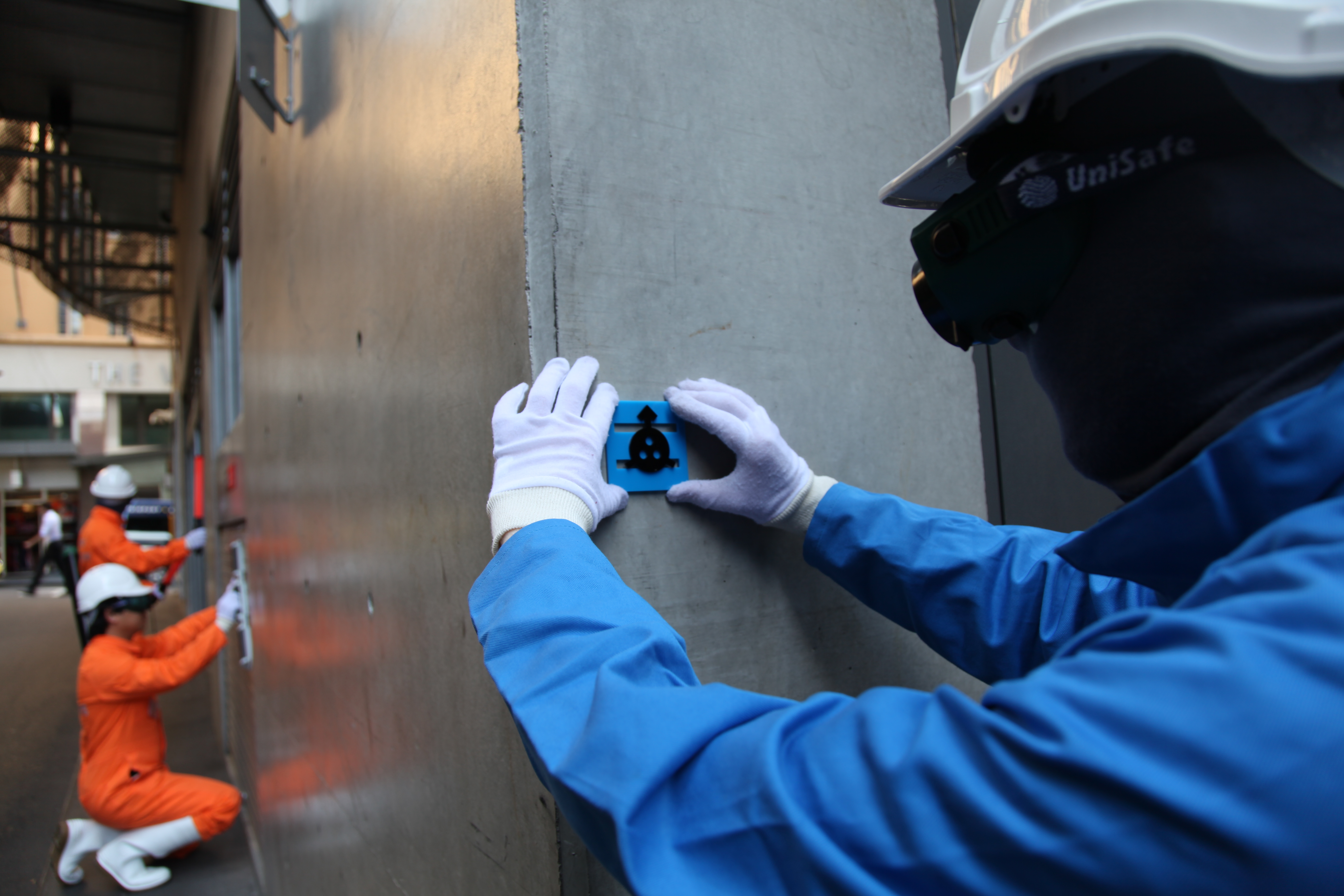
Another player who developed a unique strategy was the most successful in the Melbourne and Sydney games. He worked with an assistant who collected and held codes once located by him. While his assistant, fauxpolga, was immersed primarily as Character Player, bringtheruckus engaged primarily as Operator Player to score the most points as quickly as possible. This strategy was very successful as in the Sydney iteration, bonus points were awarded for collecting the most tags in the shortest amount of time. This mechanic was not announced to the players but left to be discovered. Moving quickly through the readymade game spaces, he would tag codes with his own cipher so that his collaborator could collect whilst he moved on to find the next target.
This brings to light another important phenomenon overlooked by the formality of Huizinga’s and Caillois’ frameworks; though playing within the same rules, many players (and indeed – as demonstrated above – spectators) are not inhabiting the same world. Bernard Suits illustrated this point well in his discussion of triflers, cheats and spoilsports: triflers respect the rules but not the goal, cheaters respect the goal but not the rules, and spoilsports respect neither.
Let us push Suits’ insight to its logical conclusion following our deduction that players may exist on different levels of the game frame: phenomenologically, it is not the same game for each player. Bringtheruckus was concerned purely with the goal-oriented material of the gamespace: the codes planted by the game designer. His Dasein was oriented towards points, rankings, overcoming the mechanics of the game and his opposition. Conversely, fauxpolga was concerned with the fictional worlds of Zydnei, Zalinhust and Renewtown, etc.; the Character World afforded by the network of objects within each environment, carefully chosen by the design team.
In the above iteration of Urban Codemakers, bringtheruckus respected the goal to the detriment of the rules’ spirit; his Operator Player approach caused consternation amongst the community, who were concerned with the destructive impact his dominant strategy had upon those existing within the Character World, where “points” and “winning” had only an abrasive, intrusive impact upon their mode of being-in-the-game-world.
Conclusion
Gamespaces, especially in the case of ARGs and pervasive games, are literally playgrounds: grounds for play, built from the ground-up by collusion: the designer works with the ludic affordances of the environment to encourage the Social Actor’s reframing of the situation, i.e. to enter the Operative or Character World. Keying up from the world of Social Actor to Operator Player and Character Player, the participants of Urban Codemakers turned the cities of Melbourne, Sydney, and their surrounding villages into spaces filled with playful possibilities, and in doing so organized a different social reality, a different phenomenological world: a gamespace. For onlookers, Social Actors perceiving the world through the lowest key of the Social World, the “everyday”, such behavior may be jarring, suspicious or indeed bewildering.
Yet all objects, human and non-human, may at any point be upkeyed into the space of the game, as quickly as they may be downkeyed once more. In founding our epistemology on the phenomenological understanding of play, the social organization of reality vis-à-vis Goffman’s frame analysis, and the nuanced, broad understanding of agency via Actor-Network Theory, we may understand games and play without drawing arbitrary, static boundaries, and therefore excluding an enormous collection of objects, ideal and material, that may enter the space of play. Indeed, particularly for analog games, the space of play is simultaneously entered and enacted via the creative instantiating and upkeying of affordances within the immediate environment: in many senses the player becomes, in symphony with a network of amenable objects, the codemaker.
–
Featured image: Urban Codemakers 2010. Copyright Troy Innocent 2010.
–
Steven Conway, PhD is a convenor and lecturer in the Games & Interactivity program at Swinburne University of Technology. He has presented on many aspects of play, philosophy, aesthetics and culture, and has had a variety of articles published on these subjects in journals such as Convergence, Eludamos, Game Studies, Journal of Gaming & Virtual Worlds and Westminster Papers in Communication & Culture. Steven is also co-editor of the first collection in academia on Video Game Policy.
Troy Innocent, PhD explores connections and multiplicity in his works of design, sculpture, animation, sound and installation. His methods of multiplatform storytelling and relationships between objects and their surroundings create their own world, a game that viewers can play. His most recent works are urban art environments: an interactive sculpture garden in the Docklands and Urban Codemakers, a game that reinvents the history of Melbourne. Innocent is currently Course Director of Games and Interactivity at Swinburne University of Technology; and is represented by Anna Pappas Gallery.

